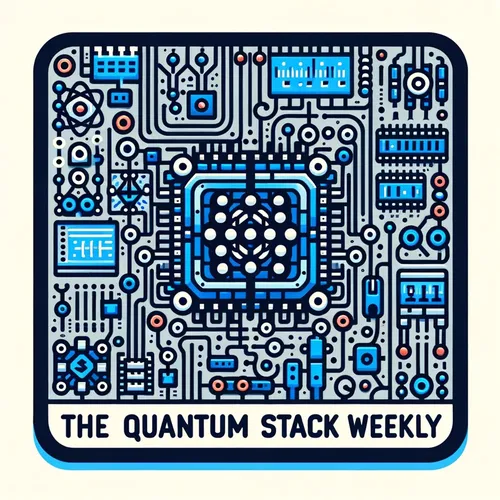Quantum Error Correction Breakthrough: Unlocking Nature's Code for Exponential Computing Power
- Author
- Quiet. Please
- Published
- Sat 03 May 2025
- Episode Link
- https://www.spreaker.com/episode/quantum-error-correction-breakthrough-unlocking-nature-s-code-for-exponential-computing-power--65882171
This is your The Quantum Stack Weekly podcast.
Welcome back to The Quantum Stack Weekly. I’m Leo—Learning Enhanced Operator—your resident quantum computing whisperer, speaking to you from the heart of the most dynamic lab in the world: reality itself. Let’s dive straight into the quantum well, because something genuinely electrifying broke just hours ago and I’m almost vibrating in superposition from the excitement.
Yesterday, at the University of Chicago’s Pritzker Nanofabrication Facility, a team unveiled a real-world application of quantum error correction on superconducting qubits that’s poised to shake up industries far beyond the laboratory. They’ve demonstrated an algorithm that can actively detect and correct two simultaneous errors per logical qubit in real time—more than doubling the resilience previously possible in deployed systems. If you’ve followed quantum computing progress, you know that coherence and error rates have been quantum’s Achilles’ heel. But by implementing non-local duality operators, borrowing ideas from the very fabric of quantum field theory, these researchers have pushed the door open to longer, more reliable quantum computations on today’s hardware.
Let’s ground this in practical terms. Quantum computers, as you know, store and manipulate information using qubits. Unlike classical bits, which feel safe and predictable—either a 0 or a 1—qubits are more like acrobats balancing on a tightrope stretched across a canyon: they can stand in any combination of 0 and 1, as if occupying every possibility at once. This incredible feat is called superposition, and when multiple qubits entangle, they weave a tapestry of probabilities that can encode problems so complex, classical machines collapse under the weight of calculation. With each qubit added, the computing power doubles—exponentially speeding up tasks like molecular simulation or cryptanalysis, where nature itself seems to keep secrets in a code only quantum can read.
But, as any tightrope walker knows, the greater the heights, the nastier the fall. Quantum states are fragile—susceptible to the faintest vibration or errant photon. Until now, correcting these errors has been like patching a leaky dam with chewing gum. The breakthrough announced this week is akin to reinforcing the dam with graphene and nanosteel—making quantum computations not just possible, but practical for far longer sequences. We’re talking about running pharmaceutical simulations for new drug discovery in mere hours instead of months, even as molecules jiggle and churn in ways that would make Schrödinger’s cat dizzy with envy.
John Levy—visionary CEO at SEEQC—put it perfectly in a recent interview: “Classical computers are speaking the wrong language. In quantum, we’re almost speaking the language of nature.” That’s not hyperbole. With quantum error correction progressing at this pace, we move closer to a future where, for example, financial modeling and weather forecasting become as precise and dynamic as the systems they seek to predict. Imagine a world where superintelligent AI—powered by quantum’s exponential muscle—can accelerate scientific discovery, perhaps even extending the periodic table or designing entirely new materials for clean energy.
I had the privilege to sit in on a video stream from the Chicago lab. Picture this: banks of gently humming cryostats, each a silver cocoon where temperatures dance tantalizingly close to absolute zero. Scientists in crisp lab coats move like choreographed electrons, adjusting superconducting circuits with the delicacy of surgeons. When the error-corrected algorithm activated, the whole room held its breath. The data stream—previously riddled with quantum “noise”—suddenly smoothed out, as if a staticky radio station tuned itself to perfect clarity. In that instant, everyone present knew: the quantum frontier just expanded.
This improvement isn’t just...
